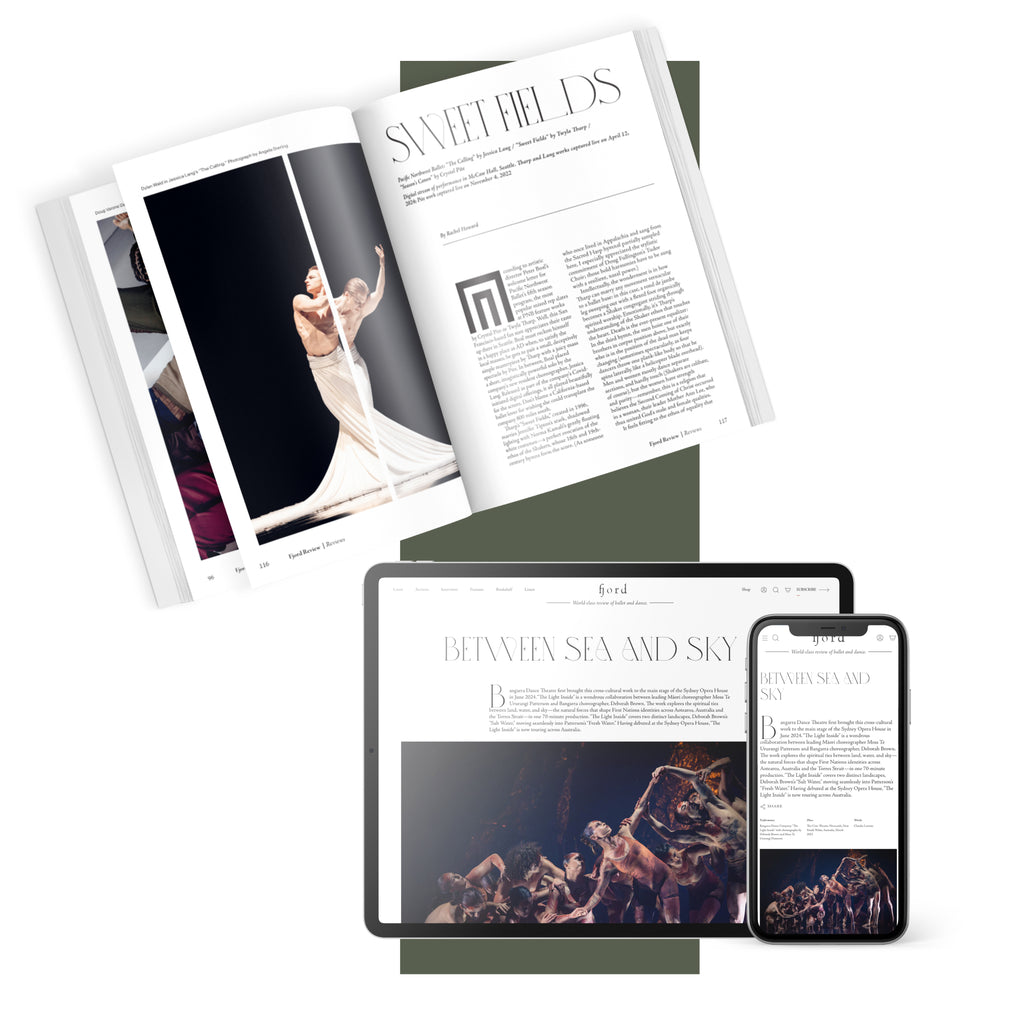Talent Time
It’s “Nutcracker” season at San Francisco Ballet—36 performances packed into three weeks—which means that the company is currently serving two distinct audiences.
Plus
World-class review of ballet and dance.
The elegant woman seated next to me at the Sunday matinee was excited to see Sara Mearns in “Slaughter on Tenth Avenue.” This was high praise, as she had fond memories of Suzanne Farrell and Arthur Mitchell in the piece—the ballet’s original 1968 cast. The New York City Ballet’s 75th anniversary season has included several dancer celebrations, but I’d like to take a moment to toast the audience, which, on any given Sunday, is full of avid and incredibly knowledgeable Balanchine fans. I often discover that a random seatmate or a stranger behind me on the concessions line is drawing on half a century of ardent viewership. Frequently, ballet legends like Eddie Vilella and Kay Mazzo are in attendance. At that same show, I sat behind the dance historian Alastair Macaulay. I’d also brought my mother along, who would never claim to be an expert though she has watched literally hundreds of shows over the years while supporting me. There are no pennants or Patty McBride bobbleheads for these balletomanes, they come for the love of the players or the game. Maybe because I’ve logged time on both sides of the curtain now, I feel compelled to fête their allegiance to the company too. Without them, there would be no 75th anything. Like that old tree-falling-in-the-woods conundrum, does a ballet exist without spectators? It would just be fancy exercise.
Performance
Place
Words



“Uncommonly intelligent, substantial coverage.”
Your weekly source for world-class dance reviews, interviews, articles, and more.
Already a paid subscriber? Login

It’s “Nutcracker” season at San Francisco Ballet—36 performances packed into three weeks—which means that the company is currently serving two distinct audiences.
PlusLast week I caught up with choreographer Pam Tanowitz and Opera Philadelphia’s current general director and president, countertenor Anthony Roth Costanzo to talk about “The Seasons,” the company’s latest production premiering at the Kimmel Center’s 600-plus seat Perelman Theater on December 19.
PlusIf Notre-Dame remains one of the enduring symbols of Paris, standing at the city’s heart in all its beauty, much of the credit belongs to Victor Hugo.
PlusWhen dancer and choreographer Marla Phelan was a kid, she wanted to be an astronaut. “I always loved science and astronomy,” Phelan said.
Plus
Many kind words lately, thank you all. And thanks Martha for sharing your memories and this great story, and for proving my point about the wisdom of the City Ballet audience!
An interesting review and I would like to point out that Bourree Fantasque was also made by Balanchine as a vehicle for Janet Reed, who joined City Ballet at his invitation the same year as Jerome Robbins. When Balanchine took Reed and her husband out to dinner at the 21 Club to ask her to transfer from Ballet Theatre to City Ballet, she responded that she would love to but she wasn’t a Balanchine dancer. “We make something for you,” he said, and the Polonaise, which she led, was that “something.” She was also first cast in Western Symphony, and acquitted herself well in Symphony in C (I remember her in that), Concerto Barocco, Serenade. I too wish I could have seen this performance of Bourree.
Always, always enjoy Faye Arthurs’ reviews. Wish I could see as many performances as she does!